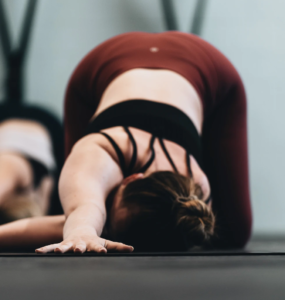Pelvic Floor Exercises
Maybe the first word that comes to mind when you hear about Pelvic Floor Exercises is “Kegel”! Yes, that’s correct– Kegel exercises are one way to exercise your pelvic floor muscles, but they are not the only ones. Kegel balls have lately become popular as an easier and faster way to strengthen your pelvic floor muscles, increase sexual pleasure, and prevent incontinence (especially if you were Assigned Female at Birth–AFAB). However, there is much debate over them, so before we worry about that we will provide some information on the benefits of pelvic floor exercises in general.
What are the benefits for AFAB people?
- Pelvic floor exercises improve bladder and bowel function control, which can be extremely helpful after childbirth or in older years. It can help with constipation, and with incontinence.
- Strong muscles on your pelvic floor can also significantly reduce the risk of prolapse.
- If you are considering childbirth, they do support vaginal delivery, and strong pelvic muscles will also greatly improve your recovery from childbirth and other gynecological surgeries.
- They are reported to help with vaginal contractions and blood flow during sex, thus increasing sexual satisfaction and orgasmic potential.
Like any self-care routine, and especially an exercise routine that helps you strengthen your muscles, training your pelvic floor muscles can help you increase your social confidence and overall quality of life.
How do they help with pregnancy and delivery?
Your pelvic floor muscles are first in line to be affected if you become pregnant; the weight of your growing baby will undeniably put extra strain on the pelvic floor. In addition to the weight, hormonal changes in pregnancy cause your muscles to soften and stretch more easily. That can lead to bladder/ bowel problems while you are pregnant and after giving birth.
It is recommended to start strengthening your pelvic floor as soon as you learn that you are pregnant. Strong muscles in the area will reduce the risk of bowel or bladder problems during your pregnancy, you will learn how to control your muscles to assist with contractions during childbirth (in the case of vaginal delivery), and with a strong pelvic floor you will return to normal much easier after delivery.
What happens to the pelvic floor after menopause?
After menopause, the production of estrogen in our bodies significantly reduces. This can lead to weaker or stiffer muscles on the pelvic floor. Connective tissues may provide less support, and along with a lifetime of bad habits and lack of specific exercise, we may be in danger of experiencing pelvic floor dysfunction.
The pelvic floor muscles are part of your spine and pelvis. If they are struggling, you may experience pain in your lower back. Weak pelvic muscles can also lead to Stress Urinary Incontinence (SUI), which means you may not be able to control your bladder during seemingly simple activities, like laughing, coughing, or sneezing. More serious pelvic dysfunctions can be pelvic organ prolapse–which can be avoided with pelvic floor rehabilitation–and bowel and urinary urgency, where we may not be able to control the urge to urinate or defecate and incidents of leakage may occur.
No matter your age, it is never too soon or too late to start looking into pelvic floor exercises or rehabilitation that are best for you, your physical condition, and your abilities.
https://www.pelvicfloorfirst.org.au/pages/pelvic-floor-muscle-exercises-for-women.html
https://www.pregnancybirthbaby.org.au/pelvic-floor-exercises
https://provenancerehab.com/aging-and-the-pelvic-floor/

